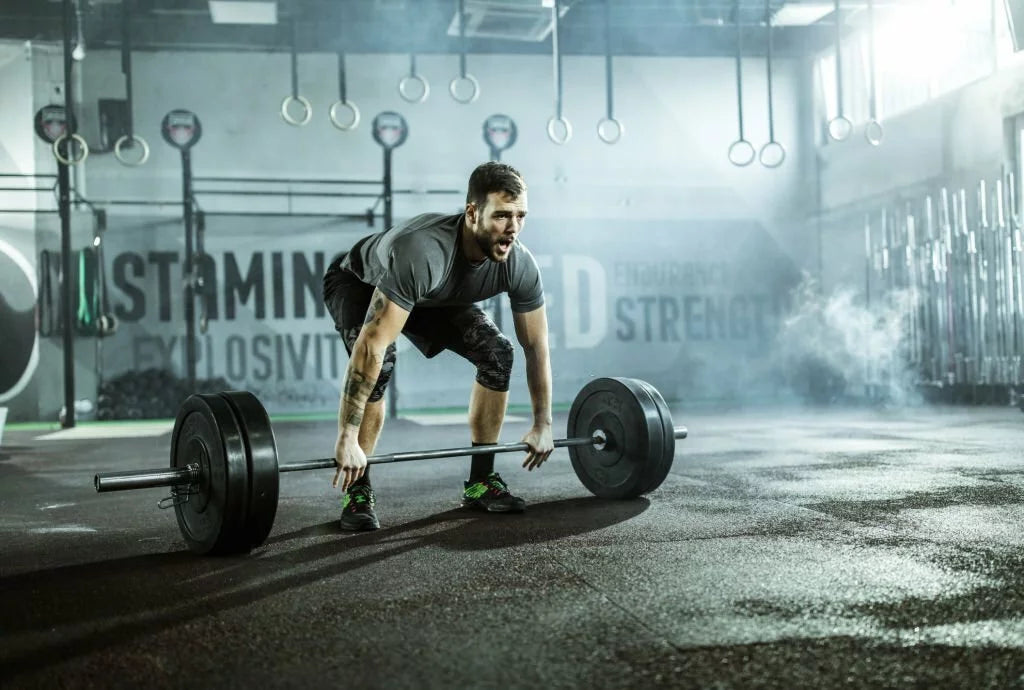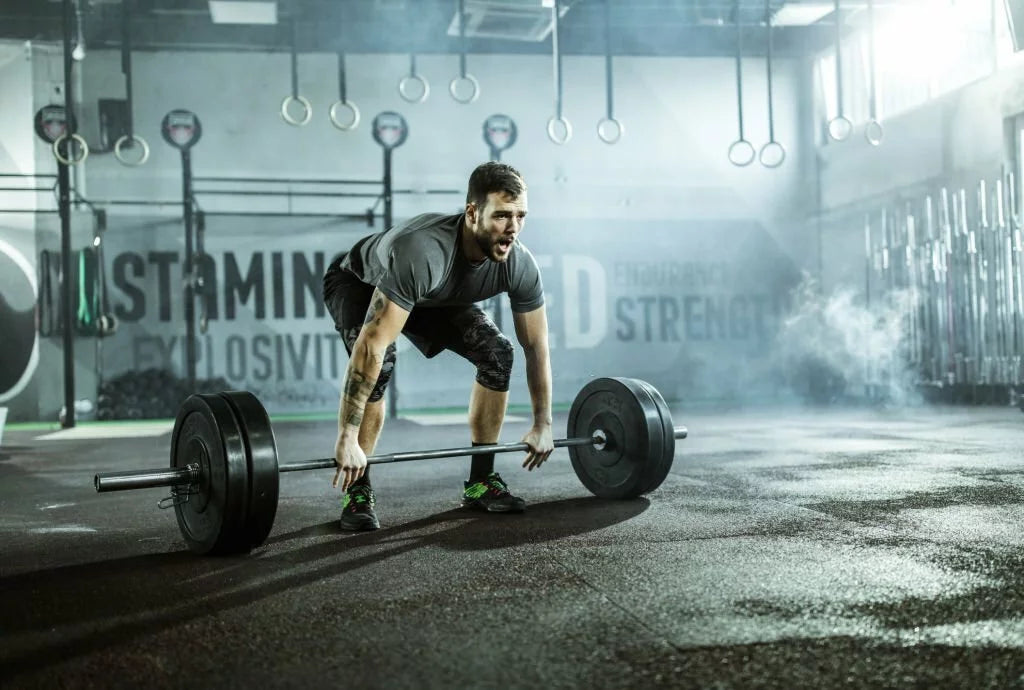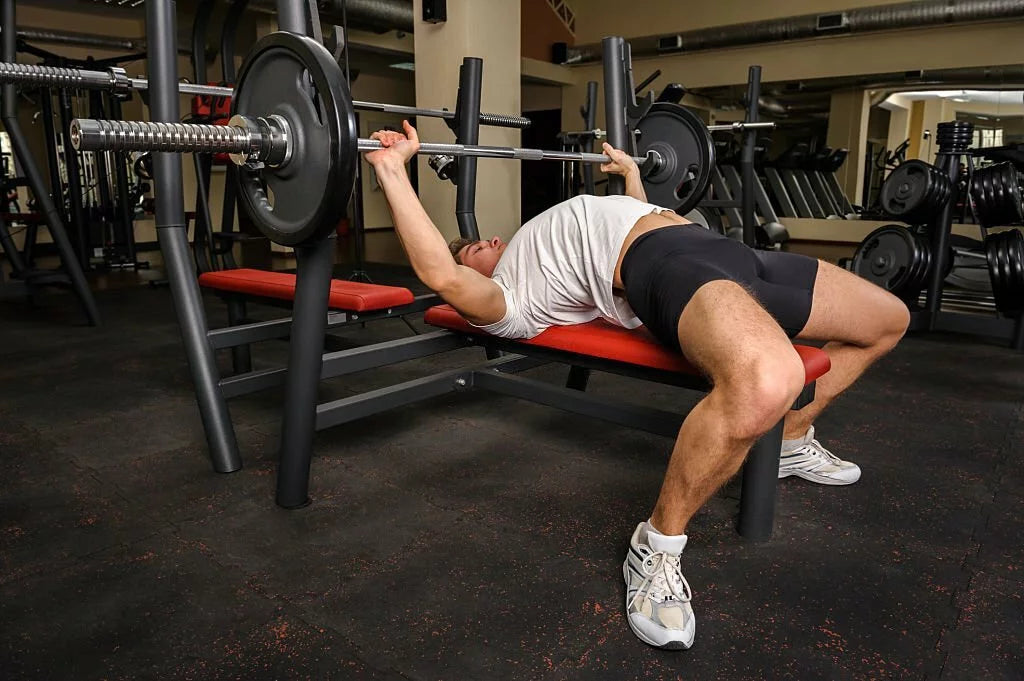Are Deadlifts Worth the Risk?


The deadlift, a fundamental exercise in strength training, is often regarded as a true testament to someone’s raw power. The idea of picking up dead weight off the floor to lockout is a daunting task that might not be for the faint of heart. But when it comes to the demands of the deadlift, many people ask:
Are deadlifts worth the risk?
When you perform a deadlift, you use several muscle groups in one big effort, creating a high metabolic demand on your body. This, in turn, becomes a catalyst for muscle growth. As long as you use proper form and optimal technique, it seems evident that deadlifts are worth the risk. I mean, would we even consider it a risk under these ideal conditions?
In this article, we will discuss the many benefits of the deadlift, exploring the mechanisms through which it promotes muscle growth and strength. We will address concerns, debunk misconceptions, and introduce deadlift variations built to enhance safety and tailor the exercise to individual needs. So, whether you're an experienced lifter or a novice looking to elevate your performance, we will allow you to discover the value of the deadlift and how it can pave the way for building a bigger and stronger physique.
Understanding the Deadlift
The deadlift is a compound exercise in strength training, especially in strongman and powerlifting. It involves lifting a motionless barbell from the ground to an upright position. Unlike the squat and bench press, the deadlift is a one-phased movement, making it unique and different from other movements that exist in your current program.
The deadlift is a pulling exercise that demands a coordinated effort between the hips and knees. The lifter stands in front of the barbell, bends at the hips and knees, and reaches down to grip the bar. The goal is to lift the barbell while extending the hips and knees, standing in an upright position with the weight held in front of the body. This can be a daunting task, so one thing we will discuss are variations of the deadlift that might meet the needs of the lifter’s body type or goals for performance.
Variations of the Deadlift
The deadlift isn’t just built around the conventional stance,nor the sumo stance. The deadlift comes in many forms, including the following:
- Conventional Deadlift
- Sumo Deadlift
- Trap Bar Deadlift
- Romanian Deadlift
Conventional Deadlift:
This classic deadlift involves a shoulder-width stance with the barbell gripped outside the legs. It places greater emphasis on the lower back and hamstrings during the lift.
Sumo Deadlift:
In this variation, the lifter assumes a wider stance with the feet positioned beyond shoulder width and the toes angled outward. The grip is inside the knees, emphasizing the hips and quadriceps and reducing stress on the lower back.
Trap Bar Deadlift:
Utilizing a specially designed hexagonal barbell, this variation places the lifter inside the bar, engaging the quadriceps and glutes more effectively. It promotes better leg drive and a more upright posture.
Romanian Deadlift:
The Romanian Deadlift involves holding a barbell or dumbbells in front of the body and hinging at the hips. It emphasizes glute and hamstring development and offers adaptability for both sumo and conventional stances.
Muscle Activation of the Deadlift
To perform a successful deadlift, a combination of muscle groups must work in harmony. Typically, the lower back plays a critical role in the deadlift, as the erector spinae muscles work diligently to maintain a neutral spine throughout the lift. The glutes, responsible for hip extension, are key contributors, providing the necessary power and stability required for this motion. The hamstrings collaborate with the glutes to extend the hips and offer additional support during the lift.
The core muscles, which include the abdominal and lower back muscles, play a pivotal role in stabilizing the spine and pelvis. They help prevent any excessive arching or rounding, ensuring that the lifter maintains proper form throughout the deadlift. None of these muscles can be used properly, though, without the success of grip strength. If you lack proper grip strength, you aren’t able to fully perform the deadlift into a lockout position.
To properly program the deadlift, the lifter must master the art of coordinating these muscle groups together, executing the lift with precision to maximize strength and minimize the risk of injury.
Benefits of Deadlifts
The deadlift has too many benefits to go unnoticed! When you begin to implement the deadlift in your workout, you will benefit from:
- Muscle Growth
- Core Strength
- Grip Strength
- Posterior Chain Development
- Functional Strength and Power Output
Muscle Growth
The deadlift stands as a powerhouse among strength exercises, offering a multitude of advantages. One of its primary benefits lies in its capacity to trigger muscle growth. When you perform a deadlift, multiple muscle groups are called into action simultaneously. This level of recruitment places the body under metabolic exhaustion, a precursor to increasing the muscular density of the body. As a result, the deadlift is a foundational exercise for those seeking muscular development and enhanced overall strength.
Core Strength
Core strength is another area where the deadlift shines. A successful deadlift requires core muscles to be strong in order to stabilize the spine and pelvis. This not only ensures proper form during the lift but also fosters substantial core strength development over time. Other ways to ensure better form is through the use of protective equipment like the lifting belt. This is a key benefit to those that program deadlifts in their routine.
Grip Strength
Grip strength can be significantly improved through deadlift training. Whether you're a dedicated lifter looking to secure the barbell during your lifts or a traditional athlete like a football player or wrestler, a strong grip is essential. Consistent deadlift training can lead to noticeable improvements in grip strength, a top characteristic many lifters and athletes desire. For those that struggle with grip, the use of lifting straps or lifting hooks can be used temporarily until grip strength has been built.
Related: How to Use Lifting Straps
Posterior Chain Development
The deadlift's impact on the posterior chain, the muscles along the back of the body, is insanely positive. The deadlift targets crucial muscles such as the lower back, glutes, and hamstrings for their development. A strong and well-conditioned posterior chain is important for maintaining a healthy and well-rounded physique. Additionally, the deadlift contributes to functional movements and activities, sport or not, thereby enhancing your overall athletic performance.
Functional Strength and Power Output
Beyond muscle growth, core strength, improved grip, and a stronger posterior chain, the deadlift plays a pivotal role in advancing overall functionality and power development for athletes. It contributes to the development of coordination, balance, and explosive strength, preparing the body for the challenges of both athletic endeavors and everyday life.
Concerns and Injury Risks
One of the most common concerns of the deadlift is the risk of lower back pain or injury. However, it's important to recognize that with the right approach, this risk can be significantly decreased. The key factor lies in proper form and technique. Maintaining good form during a deadlift is important and should be a priority. It involves finding a way to stand tall and execute the lift with impeccable posture. Many people use a lifting belt to help maintain proper posture by creating intra-abdominal pressure through bracing.
The importance of maintaining good form cannot be overstated. When deadlifting correctly, the back is safer and you can thrive on all the benefits of the deadlift. However, when performed with poor technique or posture, it can lead to strain on the lower back. By prioritizing form and technique, you can confidently tackle the deadlift without fearing the spectre of lower back pain.
Debunking Misconceptions
The perception that the deadlift could be harmful to someone’s programming is a common misconception. In reality, the deadlift can be a highly beneficial exercise with the potential to significantly improve your overall physical condition, as long as you value proper form and technique. Learning how to lift and carry heavy objects is an essential life skill, and the deadlift can serve as a valuable tool in developing that ability. You’ll never need to get ready if you stay ready, and the deadlift will allow you to stay prepared for some of the more physically demanding moments you might embark on in your life.
The hurdle many individuals face is mastering the deadlift's proper form and understanding how to incorporate it into their training regimen effectively. Learning this lift and determining the optimal frequency can be a challenge. However, in this article we have highlighted some of the key benefits to the deadlift, and plan to address the ideas of how to program this lift effectively in order to optimize your health, fitness, and performance inside the weight room and outside the weight room.
Maximizing the Deadlift
One of the most important concepts to integrate in any training program is progressive overload. Progressive overload is the key of any successful strength training regimen, especially if you plan to learn the deadlift. This principle revolves around the concept of consistently challenging your muscles by gradually increasing the resistance or intensity of your workouts. If done correctly, this process stimulates muscle growth and strength development by imposing a demand on the body that exceeds its current capacity. This is also relatable to linear periodization, which is a time-frame of specific sets, reps, and frequency to meet the needs of the lifter.
Below we will talk about how to properly program both the sumo deadlift and conventional deadlift as they are the common variations of this exercise you will see in most programs.
For the Sumo Deadlift:
- Frequency: The sumo deadlift requires more training than the conventional deadlift. It is much more technical in form and execution. You should perform sumo deadlifts at least 2 times a week to master the lift under both heavy and light loads. This will help you learn how to perform max effort by leveraging lighter loads, especially with speed.
- Volume: Start with heavy sets of 2-3 sets of 5 reps at around 80% of your one-rep max (1RM) to get accustomed to the demands of the lift. Incorporate speed work with 3-6 sets of 1-3 reps at 60-70% of your 1RM to practice power output. Additionally, perform sets with lighter weights to refine your technique and improve your setup, eventually leading to heavy single rep deadlifts.
- Variations: To complement your sumo deadlift, consider incorporating variations that target the glutes, hamstrings, and quadriceps. Options like glute bridges and floating sumo deadlifts can help improve these muscle groups and enhance your sumo deadlift performance.
[Related: Bench Press Calculator: Calculate Your 1 Rep Max (1RM)]
For the Conventional Deadlift:
- Frequency: Conventional deadlifts should be performed 1-2 times a week due to the simplicity of the lift and the high recruitment of muscles in the body.
- Volume: Similar to the sumo deadlift, initiate your training with heavy sets of 2-3 sets of 5 reps at around 80% of your 1RM to adapt to the demands of the lift. Incorporate speed work with 3-6 sets of 1-3 reps at 60-70% of your 1RM to practice power output. Also, include sets with lighter weights to improve your technique and setup.
- Variations: To enhance your conventional deadlift, consider incorporating variations that target the glutes, hamstrings, and back strength. Movements such as the trap bar deadlift and farmer walks can help strengthen these muscle groups and improve your overall conventional deadlift performance.
Deadlifts for Different Goals
The deadlift can be tailored to different fitness goals, whether you aim to build muscle mass, enhance strength, boost sports performance, or improve body composition. Here's a breakdown of how to optimize your deadlift training for various goals:
Muscle Mass and Hypertrophy:
To stimulate muscle growth, incorporate high-repetition deadlifts into your training routine. However, since the deadlift recruits multiple muscle groups, performing more than 5 reps in one working set can be challenging. An effective strategy would be doing more working sets to make up for volume training, such as 6 sets of 3 reps instead of 3 sets of 6 reps. Another strategy is to use tempo-based variations. These variations involve slower lifting and lowering phases, increasing the time under tension to exhaust your muscles and trigger hypertrophy. For example, performing a 5-second eccentric (lowering) phase can be highly effective for muscle growth in the deadlift.
Strength Development:
One big tip for anyone who wants a bigger deadlift is to not always train heavy. Developing strength with the deadlift involves submaximal working sets. Use lighter weights to focus on speed and power. Lifting with maximal velocity and power can improve your ability to generate force quickly, which is essential for strength gains. If you train to be fast, you'll become faster. Submaximal sets are also excellent for refining technique and minimizing the risk of injury.
Sports Performance:
When deadlifting for sports performance, choose a double overhand grip and maintain a conventional stance. This helps lifters learn to be better off the floor, especially if they integrate lifts like the hang clean or power clean. Using a conventional stance closely mimics common athletic stances, making it more applicable to sports movements. Focusing on the conventional stance helps translate deadlift strength into improved performance on the field or court. The double overhand grip also enhances grip strength, an important asset for athletes in specific sports that require grip strength.
Body Composition and Weight Loss:
To improve body composition and aid in weight loss, choose a lighter weight for your deadlifts and prioritize flawless form. Perform multiple reps in the range of 6-10 per set. This contradicts the rep ranges for strength and power athletes, but that’s not the goal for this population of body composition and weight loss. This approach of the deadlift keeps the intensity manageable while ensuring that you engage various muscle groups and burn calories.
For anyone worried of doing heavy volume with the deadlift, consider using variations like the trap bar deadlift, which can be gentler on the lower back and promote better form. Also, the use of a lifting belt could be ideal to keep the back tight and rigid for performance.
Conclusion
In the world of strength training, the deadlift stands as a testament to raw power and an invaluable addition to any fitness regimen. But are deadlifts worth the risk? The answer is a resounding "yes”, but only when executed correctly.
The deadlift's ability to engage multiple muscle groups makes it a catalyst for muscle growth. Besides building muscular strength and size, Its practicality extends beyond the gym, mirroring everyday actions like lifting and carrying objects. The deadlift is then the epitome of functional strength training.
In this article, we've explored the advantages of the deadlift, discussed misconceptions, and provided insights on how to implement the deadlift for your specific goals. Whether you're aiming to build muscle, enhance strength, improve sports performance, or achieve better body composition, the deadlift can be a valuable tool when done correctly.


